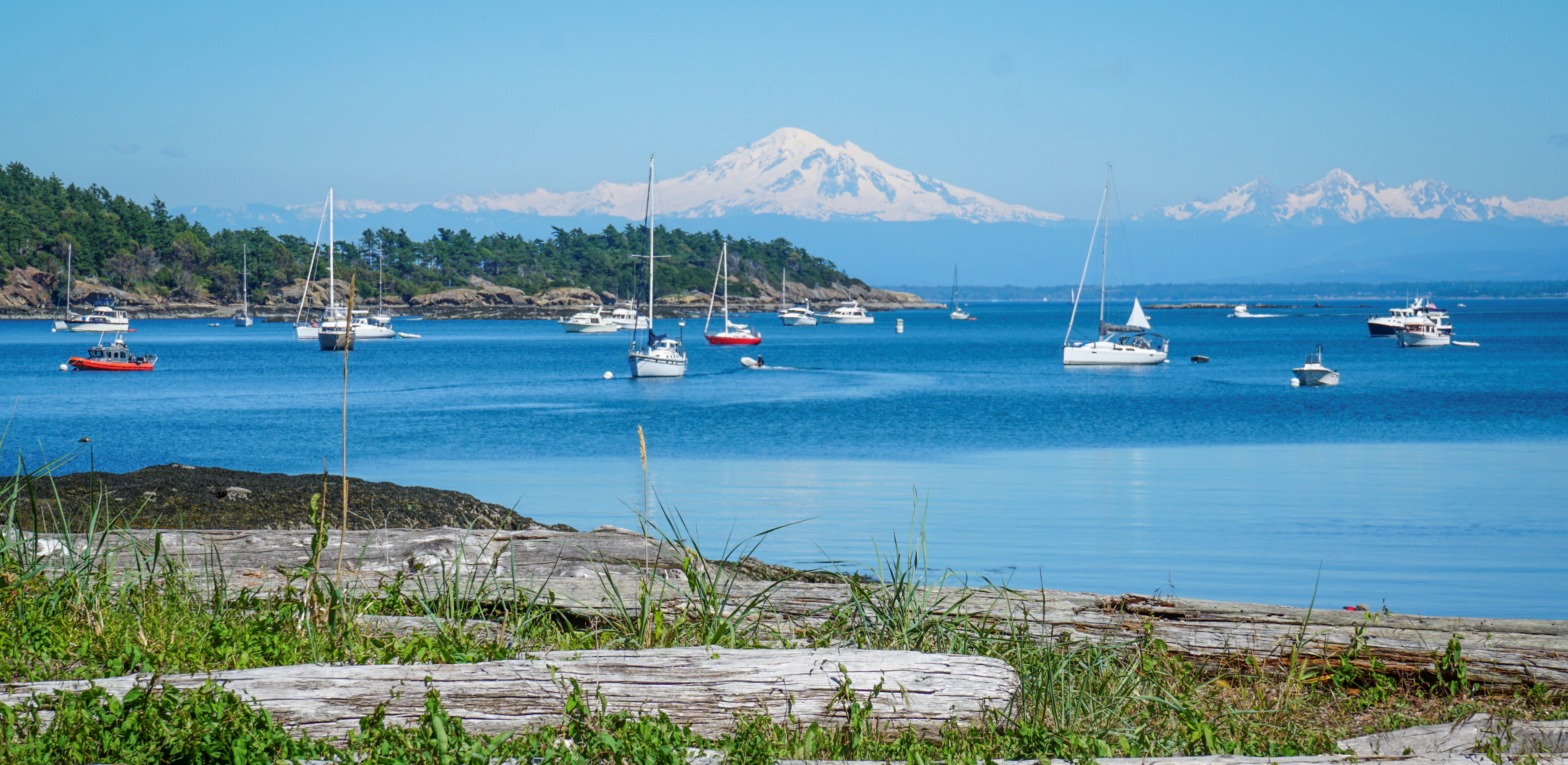
North Puget Sound - Region 4
We are experiencing intermittent closures at the Mill Creek Regional Office during the month of April due to staffing shortages. We appreciate your patience during this time.
Phone calls to North Puget Sound Region customer service will go to voicemail during this time. We will return your call as soon as possible. We encourage you to email us at TeamMillCreek@dfw.wa.gov.
16018 Mill Creek Boulevard
Mill Creek, WA 98012-1541
United States
Fishing tips and news
New to fishing in Washington? Check out our Fish Washington blog post for a guide on how to get started.
Purchase your 2024 fishing license
Now that spring has arrived, Washingtonians will need to purchase 2024-2025 recreational hunting and fishing licenses effective April 1.
Licenses can be purchased from WDFW’s licensing website, from regional offices, and hundreds of license vendors around the state.
2023-24 Sport Fishing Rules
The 2023-24 Washington Sport Fishing Rules pamphlet is available online and at hundreds of license dealers around the state. Fishing seasons are in full swing, and the updated rules can help anglers make decisions about how to spend their time on the water.
Current fishing regulations and emergency Fishing Rule Changes are also available online at wdfw.wa.gov/fishing/regulations.
Hundreds of lowland lakes around Washington open for fishing on April 27
Anglers can look forward to trout fishing in hundreds of lowland lakes throughout the state beginning April 27—and perhaps winning one of more than 800 trout derby prizes along with their catch. More information is available in our recent news release.
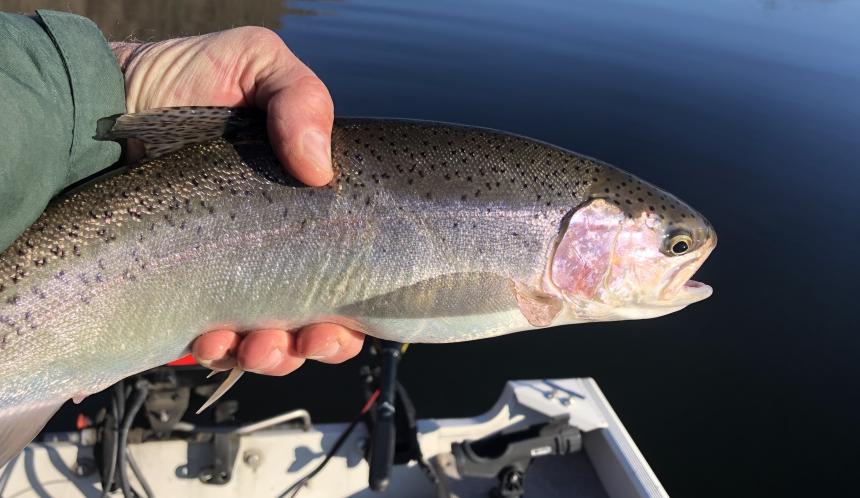
The annual trout derby kick-off coincides with the lowland lakes season opener. The Washington Department of Fish and Wildlife (WDFW) stocks millions of trout in lakes throughout the year, and opening day marks the first time people can fish many of those lakes for the catchable trout planted every winter and spring. Opening-day lakes are often stocked shortly before the start of their six-month season. Anglers can visit WDFW’s website to see which lakes have been stocked in recent weeks and can sort by county or waterbody to find a nearby stocked lake.
WDFW planted over 14.5 million trout and kokanee across Washington in the past year. The catchable-size trout averages 2.5 fish per pound, or 12 to 14 inches. There are also nearly 143,000 jumbo trout that measure more than 14 inches, averaging one to 1.5 pounds. Most jumbo trout are planted in March and April, with others saved for fall planting.
Depending on the lake, people may encounter rainbow trout, cutthroat trout, kokanee salmon, and other fish species. Visit WDFW’s fish stocking webpage for information, including the 2024 statewide hatchery trout and kokanee stocking plan and recent catchable trout plant reports.
Or visit the derby information page in early April to find a participating lake near you and learn more about how the WDFW Trout Derby works. Check out the WDFW Medium blog for tips and videos on how to catch trout.
Washington salmon fishing seasons tentatively set for 2024-2025
Anglers in Washington can expect similar salmon fishing opportunities in 2024-2025 compared to last season, Washington Department of Fish and Wildlife (WDFW) fishery managers announced this month. Learn more in our news release and Salmon Daily Digest blog series.
The 2024-25 salmon fishing seasons, cooperatively developed by WDFW and treaty tribes, were tentatively set Thursday at the week-long Pacific Fishery Management Council (PFMC) meeting held in Seattle.
“These salmon fishing seasons were crafted carefully to ensure conservation goals are achieved for salmon populations, especially those listed as threatened or endangered under the Endangered Species Act (ESA),” said WDFW Director Kelly Susewind. “We’ve worked carefully with treaty tribes to ensure there will be sustainable salmon fisheries and developed a fair number of fishing opportunities in Washington while protecting weaker salmon stocks.”
Continued low returns of some key Puget Sound Chinook salmon stocks are expected to limit some salmon fisheries in the upcoming season. They include the Nooksack, Skagit, Snohomish, and Stillaguamish rivers.

Halibut fishing starts April 4 in North Puget Sound marine areas
The 2024 halibut season will kick off April 4 in several Puget Sound marine areas. See our halibut season news release or webpage for details.
This season is structured similarly to last season with Sekiu and Pillar Point (Marine Area 5) opening on the same date as the Eastern Strait of Juan de Fuca, San Juan Islands, Admiralty Inlet, and Puget Sound (Marine Areas 6, 7, 8, 9, and 10).
There is a one-halibut daily catch limit and no minimum size restriction. Anglers may possess a maximum of two halibut in any form while in the field and must record their catch on a WDFW halibut catch record card. New for 2024, the annual limit is six halibut per angler.
Fishery managers remind anglers that barbless hooks are required for all species in these marine areas including halibut and bottomfish—except when using forage fish jig gear to target forage fish (herring, sandlance, anchovy, sardine, and smelt). Refer to Marine Area Rules and Definitions in the Washington Sport Fishing Rules.
A descending device must be on board vessels and rigged for immediate use when fishing for or possessing bottomfish and halibut in Washington waters. Visit WDFW’s webpage for information about descending devices.
2024 clam and oyster seasons underway
With the return of spring and daytime low tides, many of Washington’s clam and oyster beaches are now open or will soon reopen for recreational shellfish gathering.
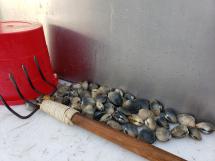
State clam, mussel, and oyster harvesting seasons vary by beach. Regulations and season dates as well as shellfishing tips are available at wdfw.wa.gov/places-to-go/shellfish-beaches.
For more details, including shellfish rules and regulations, see our news release.
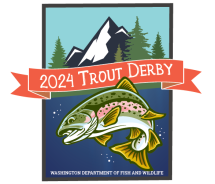
Skagit and Sauk rivers open for steelhead
Recreational steelhead fishing is scheduled to be open through April 17 five days per week, Saturdays through Wednesdays only, closed Thursdays and Fridays, on portions of the Skagit and its major tributary the Sauk under catch and release regulations, except up to two hatchery steelhead may be retained.
To support future steelhead runs, anglers are reminded to handle wild steelhead carefully and to please avoid dragging boat anchors, which can destroy redds (egg nests).
Wild steelhead must be released immediately and may not be removed from the water. Learn more in our news release.
This fishery has been exceptionally popular since it opened in February. Before hitting the water, anglers should check for any emergency rule changes that may announce changes to the fishery area.
Winter Chinook salmon in marine areas
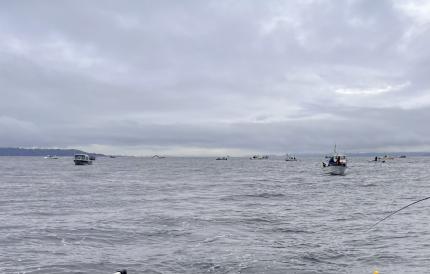
Marine Area 10 (Seattle/Bremerton Areas) is closed after winter Chinook guidelines were met.
Marine Area 11 (Tacoma-Vashon Island) remains open four days per week – Wednesdays through Saturdays only – through April 15 or until the fishery guidelines are met. Commencement Bay (east of a line from Cliff House Restaurant to Sperry Ocean Dock) in Marine Area 11 is closed to salmon fishing.
Marine Area 13 (South Puget Sound) is open year-round and has been slow to fair for winter Chinook in the Fox Island area. You can also try for resident coho in Marine Area 13 casting a fly or spinner, and they’re often accessible from shore at spots such as Purdy Bridge and Narrows Park.
For tips, go WDFW's salmon fishing webpage.
Boating safety
With freshwater fishing season openers in April, the Washington State Park and Recreation Commission Boating Program reminds you to take a boater safety education course, if you haven’t already, to be prepared for the season. In Washington, boaters who operate a vessel with a 15-horsepower engine or greater must carry a Boater Education Card to prove they passed an accredited boating safety education course.
Fishing for "sea-run" coastal cutthroat
Among coastal cutthroat trout, some populations are anadromous around Puget Sound, on the Washington Coast including Grays Harbor and Willapa Bay, and in lower Columbia River tributaries; meaning they spawn in freshwater but live much of their lives in saltwater.
Learn more about these unique sea-run cutthroat and how to fish for them in this February 2022 WDFW blog post and March 2016 YouTube video.
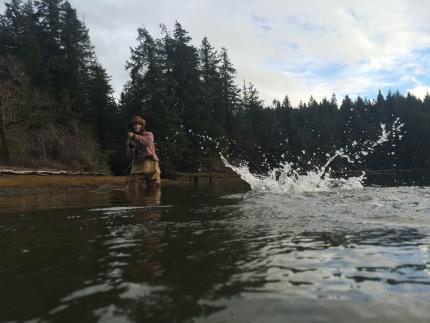
Sometimes called "harvest trout" due to their autumn run timing in many rivers, sea run cutthroat make excellent catch and release quarry on fly fishing gear or light spinning tackle. They typically range from 10- to 20-inches in length, and once located will aggressively bite flies and small spoons or spinners.
The cooler waters of October into January are typically peak cutthroat fishing season, followed by a lull during late January and February when these trout spawn in rivers and creeks across Western Washington. There is often another fishing peak in many saltwater areas from March into June when sea run cutthroat are feeding on salmon fry and small baitfish.
In North Sound, Coastal and Lower Columbia rivers sea run cutthroat often school up under logjams, overhanging banks, and in other portions of the lower and mainstem rivers where they can ambush smaller fish and insects.
In South Puget Sound and Hood Canal, cutthroat will stay in shallow nearshore saltwater bays and estuaries most the year—typically caught in water ten feet deep or less, and sometimes as shallow as a few inches—before dashing up small creeks and rivers to spawn in late-January and February.
Hunting opportunities and news
For an overview of hunting in Washington and how to get started, visit our Hunt Washington blog post.
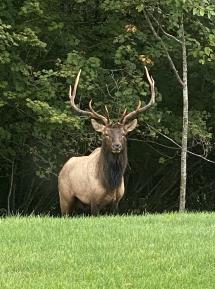
Special hunt applications now available
Multi-season deer and elk tags enable you to hunt archery, muzzleloader, and modern firearm seasons, while special hunt permits offer opportunities such as hunting outside general seasons, all increasing your chances for success.
Learn more including details on the May 15 special hunt application deadline on myWDFW.com.
2023-24 Hunting Regulations
The 2023-24 Game Bird and Small Game Hunting Regulations and Big Game Hunting Regulations pamphlets are available online and at hundreds of license dealers around the state. The updated rules can help hunters make decisions about how to spend their time in the field.
Current hunting regulations are also available online at wdfw.wa.gov/hunting/regulations.
Spring wild turkey hunting
The statewide spring wild turkey hunting season runs from April 15 to May 31 for the general season, while a special youth-only hunt takes place April 1-7. For additional details, visit the wild turkey hunting webpage.
Most Western Washington turkey hunters travel to central, eastern, or southwest Washington, as there are very few wild turkeys in the Puget Sound Region.
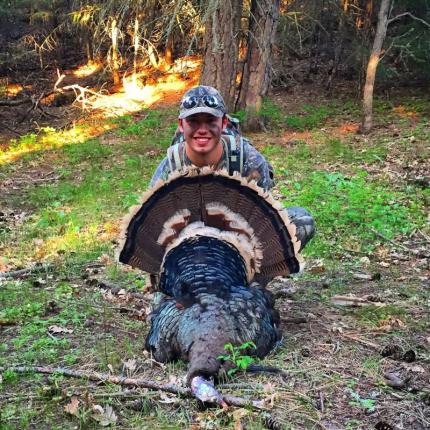
New, prospective hunters must complete hunter education
Before hunting seasons start, be sure to complete your hunter education course.
Students may choose between a traditional classroom or hybrid course. The traditional course is a multi-session instructor-led training with an average of 15 hours of instruction. The hybrid course consists of a self-paced online class followed by a field skills evaluation by certified instructors.
Prospective hunters can learn more about hunter education requirements and register for either a traditional or hybrid course by visiting WDFW’s hunter education webpage.
Per Washington state law, all hunters born after Jan. 1, 1972, must complete a hunter education course in order to buy a hunting license. A hunter education deferral is available for hunters 10 and older who want to try hunting with an eligible licensed hunter before completing a hunter education course themselves.
WDFW offers accessible hunting and wildlife-viewing blinds
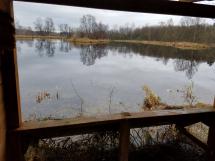
Did you know WDFW offers hunting and wildlife-viewing blinds and platforms throughout Washington that are accessible to people with disabilities? Learn about these Americans with Disabilities Act (ADA) designated sites at wdfw.wa.gov/accessibility/hunting-and-wildlife-viewing-blinds.
Some sites can be reserved through WDFW's Private Lands Hunting Access program. Others can be reserved by calling the wildlife area manager.
Hunters without disabilities should yield ADA hunting and wildlife-viewing blinds and platforms to those with disabilities if the site was reserved.
Many of these ADA hunting and wildlife-viewing blinds and platforms are built and maintained with support from volunteers, master hunters, and partners including Inland Northwest Wildlife Council and Washington Waterfowl Association. Thank you!
Be aware of avian influenza (bird flu)
With the spring bird migration underway, there is a chance we could also see a resurgence in highly pathogenic avian influenza (HPAI or commonly known as bird flu) to the state. The H5N1 virus of avian influenza is making the rounds again, especially in areas of Western Washington. This is confirmed by WDFW testing of sick or dead wild birds and U.S. Department of Agriculture surveillance of hunter-harvested birds.
Hunters are encouraged to take precautions to protect themselves and their dogs from the virus. WDFW has specific precautions on our avian influenza webpage under “Human HPAI Safety.” If you encounter a sick or dead wild bird, please report it via our online reporting tool.
Head to myWDFW.com for info on hunting, angling, and more
WDFW has rolled out a promotional website for all things hunting, angling, foraging, recreating, and more. At myWDFW.com, you’ll find informative how-to articles on the season’s major fishing and hunting opportunities, as well as a portal to online license sales and a regular update on WDFW’s latest Life Outdoors articles.
Each quarter, new fishing and hunting highlights are posted to help you get ready and take part in Washington’s current and upcoming opportunities. Dedicated to current agency promotions, outdoor recreation information, and educational content, myWDFW.com preps you to meet with success in the field and on the water.
Hoof disease in elk
As many hunters know, Treponeme-Associated Hoof Disease (TAHD) has spread among elk in Western Washington in recent years, including in the North Cascades Elk Herd. While elk are susceptible to many conditions that cause limping or hoof deformities, the prevalence and severity of this new affliction – now known as treponeme-associated hoof disease (TAHD) – suggests something different.
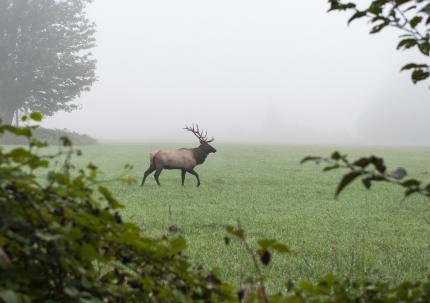
In 2021, WDFW implemented an incentive-based pilot program to encourage Western Washington (400, 500, 600 series GMUs) hunters to harvest limping elk, potentially reducing prevalence of the disease over time. General season or permit hunters can choose to participate in the program by submitting elk hooves at one of the many collection sites in western Washington.
See the WDFW website for the locations of collection sites. Hunters that submit hooves with signs of TAHD (for example, abnormal hooves) will be automatically entered into a drawing for a special incentive permit for the following license year. Multiple bull permits in western Washington with season dates of Sept. 1 – Dec. 31 will be awarded. Additionally, all participants will receive a custom, waterproof license holder.
What hunters can do to help:
- Harvest a limping elk from any 400, 500, 600 series GMUs
- Turn in your elk hooves along with complete registration forms at one of several collection sites in western Washington
- Report elk: Hunters can help WDFW track TAHD by reporting observations of both affected and unaffected elk on the department’s online reporting form.
- Clean shoes and tires: Anyone who hikes or drives off-road in a known affected area can help minimize the risk of spreading the disease to new areas by removing all mud from their shoes and tires before leaving the area.
Wildlife watching and recreation
Searching for places to watch wildlife or recreate on State Wildlife Areas or WDFW Water Access Areas? Visit our Places to Go webpage, Wildlife Area map or Water Access Area webpage for ideas.
Or visit our wildlife viewing webpage for more information and tips on wildlife watching!
Big Ditch Water Access Area closed to vehicles April 15 - Sept. 15
Big Ditch Water Access Area is closed to vehicle entry April 15 through September 15 to reduce illegal dumping, vandalism, and target shooting. Walk-in access from the gate is allowed. This site near Stanwood on the southside of Skagit Bay is popular in the fall and winter for waterfowl hunting and birdwatching.
For information on other water access areas nearby, please visit our Skagit Wildlife Area webpage.

Watchable Wildlife
April is a busy month for the birth of baby animals. If you find fawns, baby birds, or other young animals, please leave them be, even if they appear to be orphaned or abandoned. Most animals have a parent foraging or hunting nearby. Read our blog to learn about when not to rescue wildlife and what to do if you encounter certain species.
#LifeOutdoorsWA
The outdoors fits into everyone’s life in unique and personal ways. We want to help people connect with nature wherever they are. Check out our Life Outdoors resources to plan your next adventure, whether it be birding in your neighborhood or camping across the state. We hope to see you in the field and on the water enjoying the Life Outdoors!
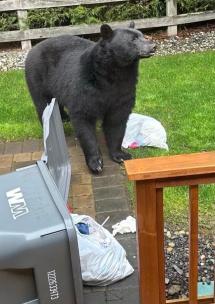
Practice bear awareness this spring
Black bears are common throughout Washington, including suburban areas. Both when preparing for hibernation and awakening from it, they look for high-calorie foods that are easy to obtain. These may include garbage, bird feeders (both seed and liquid), fruit trees, and pet food.
As human populations encroach on bear habitat, people and bears have greater chances of encountering each other. Food sources provided by humans, whether intentionally or not, can attract bears. Removing these attractants is the best way to encourage bears to move along and focus on natural food sources
Ask your local waste management company if bear-resistant containers are available or if individually purchased bear-resistant containers are compatible with the company’s equipment. Secure your garbage cans, such as in a shed or garage, and put them out the morning of pickup — not the night before. To help reduce odors, freeze meat and fish waste before disposing of it and spray garbage cans with disinfectants.
More information on living with bears is available on our website.
Leave wild babies wild
April is a busy month for the birth of baby animals. If you find fawns, baby birds, or other young animals, please leave them be, even if they appear to be orphaned or abandoned. Most animals have a parent foraging or hunting nearby. Read our blog to learn about when not to rescue wildlife and what to do if you encounter certain species.
For wildlife that do require care, WDFW relies on permitted rehabilitators. Rehabilitators are trained and highly skilled in providing the unique attention needed for injured or orphaned wildlife, and care deeply for the animals entrusted to them.
Visit our website to learn more about Washington’s wildlife rehabilitators and find one near you. Remember to thank the rehabilitators in your region for the important work they do on behalf of our state’s wildlife!
Tips for living with coyotes
Coyotes (Canis latrans) are present across nearly all of Washington state, from the shrubsteppe to the alpine, as well as urban and suburban areas. They are common in many larger, wooded green spaces and parks within cities including Seattle.
You may hear coyotes more frequently than you see them, especially when they have pups. Juvenile coyotes are often heard in summer, trying out their voices. Coyote sightings often increase in winter when they are more active, or in late-winter and spring when they may have dens and pups to care for.

Urban coyotes are a good reminder to keep a close eye on children and small pets or to keep them inside if unsupervised. Visit our coyote webpage or learn more in this recent blog post.
Find ADA-accessible facilities to enjoy the outdoors
Whether you’re looking for fishing, hunting, or wildlife viewing opportunities, our website offers many tools to find ADA-accessible facilities to enjoy the outdoors. WDFW-managed lands with ADA facilities include water access areas and wildlife areas. Our website also has a list of fishing piers that you can filter by county and availability of ADA-accessible facilities. Visit our blog post to learn more.
WDFW statement on cougar incident in King County on Feb. 17
Learn more about this incident in our statement.
“We are thankful that the victim is stable after the incident this weekend,” said Lieutenant Erik Olson. “The people on scene took immediate action to render aid, and one of our officers was able to arrive within minutes to continue medical aid and coordinate transport. We may have had a very different outcome without their heroic efforts.”
For more information on Washington cougars visit WDFW’s website.
Skagit Wildlife Area Headquarters Unit to remain closed to public
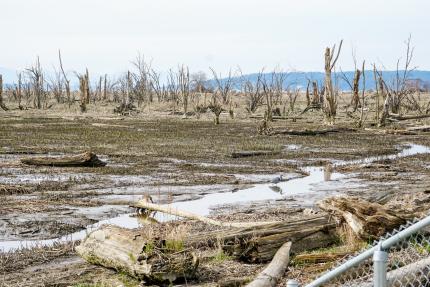
Following heavy rains and flooding, we have determined that the Skagit Wildlife Area Headquarters Unit near Conway will remain closed to public access until further notice due to safety concerns. Walk-in access is prohibited.
WDFW hopes to reopen the Skagit Headquarters Unit to the public later in 2024 once critical public safety and habitat protection work is complete. Learn more in our statement.
Since 2016, multiple high-water events have overtopped dikes in the area, resulting in temporary inundation of public and private property. This construction project will raise and widen the dikes in accordance with Army Corps of Engineers standards. More information is available on this webpage.
Conserving species and habitats
Looking for more info on wildlife conservation and species management around Washington? Check out our Bi-Weekly Wildlife Program reports.
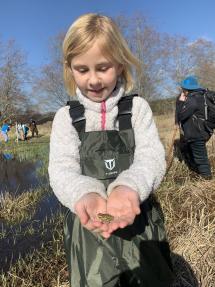
Wild Washington: April 22 is Earth Day
April 22 is the 54th annual Earth Day. This holiday is a great way to celebrate Earth and the services it provides, like clean air and water, pollution control, and food. It’s also a great time to give back to our planet through volunteering.
Check out official Earth Day events throughout Washington or Earth Day events WDFW is attending on our calendar. Many events will take place on April 20 this year. You can also celebrate Earth Month with your family through WDFW family educational resources focused on stewardship. These resources are a great way to become a fish and wildlife steward in or near your home.
Learn more on our Wild Washington youth education program webpage.
Habitat at Home: Take the City Nature Challenge
From April 26-29, cities around the world are teaming up with community members and iNaturalist to observe the wildlife around them. To participate, take pictures of all of the wild animals and plants you see and upload them to the iNaturalist app or website.
Following the challenge, experts will identify the wildlife in your images! Communities around the state are hosting wildlife viewing events. Join the Palouse Region, Kitsap County, Seattle-Tacoma, Vancouver, Thurston County, Spokane, or Global Project challenges!
Submit comments on bald eagles, peregrine falcons

WDFW is seeking public input on its draft periodic status reviews for the bald eagle and peregrine falcon.
Both species have previously been removed from Washington’s list of state endangered species due to population recovery in the state. Based on the latest available information, WDFW biologists recommend that both birds retain their status as successfully recovered.
The public comment periods for the bald eagle and peregrine falcon draft status reviews are open through May 27. The Washington Fish and Wildlife Commission is tentatively scheduled to consider these topics in June. Learn more in our news release.
Updates on WDFW's 25-year Strategic Plan
This winter, Washington Department of Fish and Wildlife’s (WDFW) 25-Year Strategic Plan turned three, launching us a few years into a long forward-thinking vision for the future of fish and wildlife conservation here in Washington through 2045.
As we look back on our progress in 2023, it’s also an opportunity to pause and reflect on all that we’ve accomplished together in these first few years on the goals outlined in our strategic plan. Learn more about implementing our 25-Year Strategic Plan: A Path to an Improved Era for Fish, Wildlife, and People, in this blog post.
Please report suspected European green crabs

Our Aquatic Invasive Species (AIS) unit recently received a report from a concerned member of the public who claimed to have collected nine invasive European green crabs from a Hood Canal beach. Upon reviewing their photos, we quickly determined these were in fact helmet crabs, a common native species unlawful to kill or retain.
While we appreciate their concern about invasive species, the reporting party was reminded to photograph and report suspected European green crabs using the form at wdfw.wa.gov/greencrab, leaving the crab in question where it was found.
Incidents like this are one reason why WDFW has not yet opened recreational harvest for European green crabs in Washington. Other reasons include restrictions on access to private tidelands and shellfish beds, and concerns about bycatch of protected fish and shellfish, especially if traps are exposed during low tide. Read more in our blog post.
Keeping Washington's habitat connected
Animals rely on movement to survive, in pursuit of food, resources, and seasonal habitat. As Washington's human population grows, the state's natural habitats grow increasingly fragmented. Habitat connectivity is about ensuring animals have the freedom of movement they need to thrive, and WDFW is working hard with its partners to help improve those connections across Washington.
Join the WDFW Team
If you’d enjoy preserving, protecting, and perpetuating the state’s fish, wildlife, and ecosystems while providing sustainable fish and wildlife recreational and commercial opportunities, then check out some of our current job openings or sign up for job alerts. From fish hatchery specialists to environmental engineers and budget analysts to wildlife biologists, a career with WDFW makes a difference.
Wildlife Program biweekly reports
To read reports published prior to 2023, visit the Biweekly Wildlife Program activity reports page.
Meet your Regional Director: Brendan Brokes
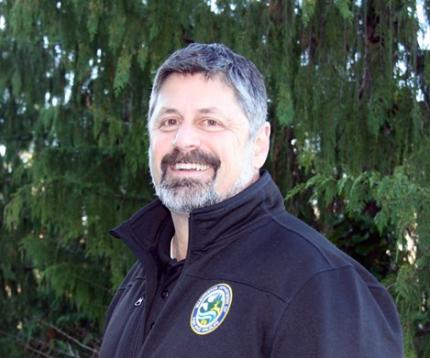
Brendan Brokes, North Puget Sound Region Director (Region 4), holds a master's degree in fisheries science from Oregon State University and has lived in the Pacific Northwest since 1987. He served as the Habitat Program Manager in this region since 2015, after filling a decade-long role as the Assistant Regional Habitat Program Manager.
Before arriving at WDFW in 2001, Brokes worked at Mount Rainier National Park as a researcher and biological technician in aquatic ecology. He also worked with the National Marine Fisheries Service monitoring foreign commercial fisheries compliance.